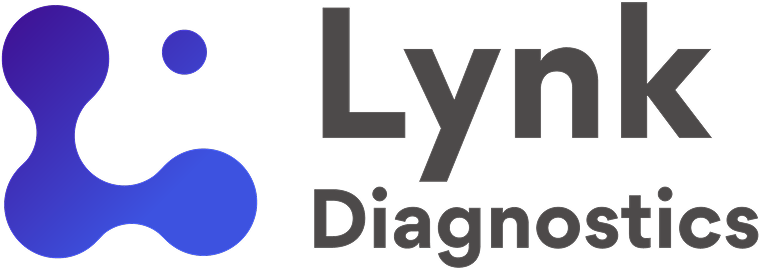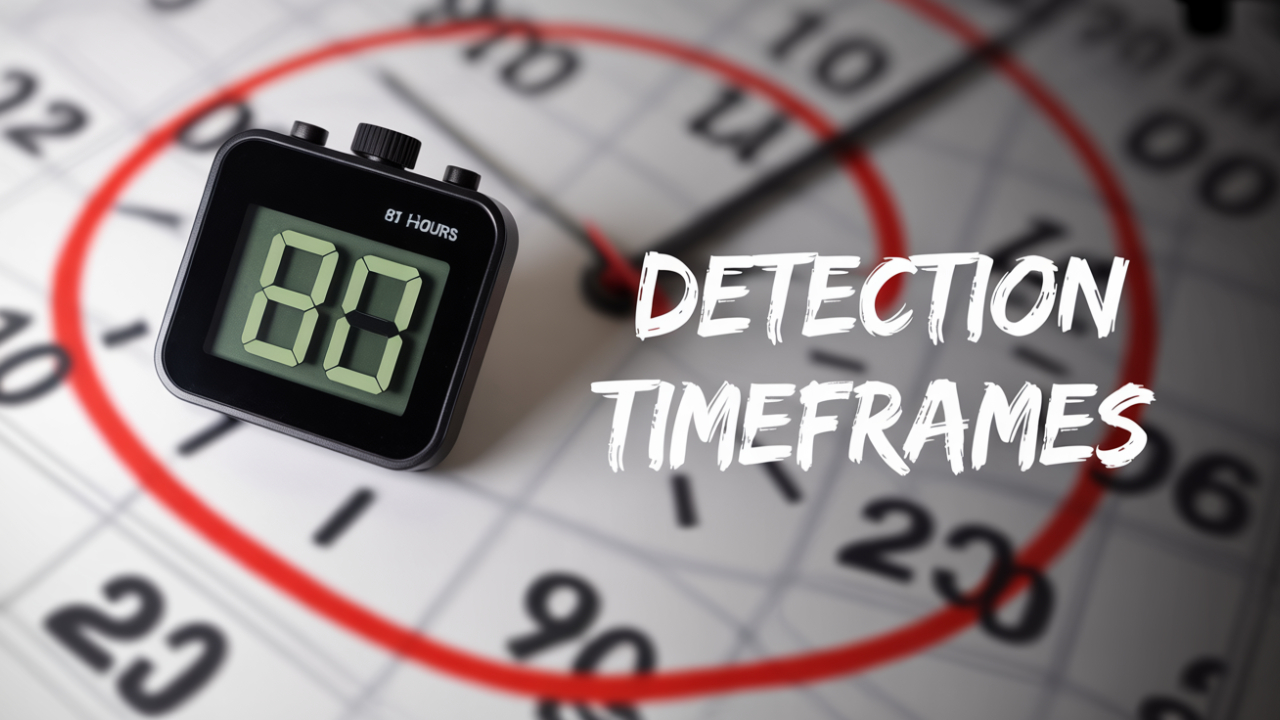Realistic ETG Detection Times
ETG (ethyl glucuronide) urine tests can detect alcohol in the body for up to 80 hours—and in some cases, even 120 hours—after your last drink. This extended window makes it possible to confirm alcohol use days after a person’s blood alcohol content (BAC) drops to zero. While a breathalyzer only works for a few hours, urine ETG testing captures alcohol exposure well beyond visible signs of intoxication.
This is why ETG testing is commonly used in addiction treatment programs, legal monitoring, and workplace substance abuse screening. The timing matters. One beer might show up in an ETG urine test for 24–48 hours. A night of binge drinking can result in detection for 72–120 hours. Knowing these realistic detection times is key for anyone who needs to prove alcohol abstinence, evaluate relapse risks, or confirm sobriety in a clinical setting.
At Lynk Diagnostics, we provide high-accuracy urine ETG testing for healthcare providers, addiction programs, and dual diagnosis treatment centers. Our lab services offer rapid results with scientifically validated detection windows to support treatment goals and promote better health outcomes.
What Is ETG and Why It Matters
Ethyl glucuronide (ETG) is a non-volatile, water-soluble metabolite formed when ethanol (the intoxicating component of alcohol) is processed by the liver. Unlike breathalyzer tests, which measure current blood alcohol content (BAC), ETG remains in the body long after alcohol has been metabolized.
ETG is most often detected in urine, but it can also be found in blood, hair, and even nails. ETG testing is favored in substance abuse monitoring because it signals alcohol consumption even when a person no longer appears intoxicated.
How ETG Is Formed in the Body
After a person consumes an alcoholic drink—whether beer, wine, or liquor—the ethanol is absorbed into the bloodstream. The liver metabolizes ethanol into acetaldehyde and then into acetic acid. During this process, a small amount of ethanol undergoes a separate reaction involving glucuronic acid, forming ethyl glucuronide.
This ETG metabolite is then excreted in urine. Because it bypasses the usual oxidation pathway, ETG offers a longer detection window than measuring blood alcohol content alone.
Detection Windows: Blood Alcohol vs. ETG
The difference between blood alcohol content (BAC) and ETG detection times is significant. BAC is only useful for identifying recent drinking—typically within a few hours. ETG, on the other hand, can detect alcohol long after the intoxicating effects have worn off.
|
Test Type |
Detection Window |
Best For |
|
Breathalyzer |
Up to 12 hours |
Immediate intoxication checks |
|
Blood Alcohol Content |
Up to 12 hours |
Recent drinking, clinical BAC analysis |
|
ETG in Urine |
24 to 120 hours (1–5 days) |
Detecting past alcohol use |
|
ETG in Hair |
Up to 90 days |
Long-term alcohol consumption history |
|
ETG in Nails |
Up to 90 days |
Similar to hair; harder to alter or tamper |
Realistic ETG detection times depend on how much alcohol was consumed, the person’s metabolism, hydration levels, body weight, and liver function.
Realistic ETG Detection Times by Scenario
Light to Moderate Drinking
A single glass of wine or one beer may be detectable in urine ETG tests for 24 to 48 hours. Factors like hydration and exercise can influence how quickly the metabolite leaves the system.
Heavy or Binge Drinking
For individuals consuming large amounts of alcohol (e.g., multiple drinks over several hours), ETG can remain detectable for up to 80 hours or more. In some cases, traces can be found for five days, especially if the person has liver disease or reduced kidney function.
Chronic Alcohol Use
People with a history of substance abuse and chronic drinking may show detectable ETG levels for longer than five days. The body stores higher concentrations of metabolites when alcohol is regularly consumed.
Why ETG Detection Times Matter for Recovery and Monitoring
Accurate ETG detection helps clinicians verify abstinence in recovery programs, including those treating dual diagnosis cases where addiction and mental health disorders co-exist. ETG tests are also used in legal settings (e.g., DUI cases), workplace drug policies, and child custody disputes where abstinence must be proven.
At Lynk Diagnostics, our urine ETG tests help addiction treatment providers track relapse risks, validate sober living program participation, and support insurance requirements for continued treatment.
Factors That Affect ETG Detection
1. Metabolism and Liver Health
Faster metabolism and a healthy liver can reduce ETG detection times. People with liver damage or metabolic disorders may retain alcohol metabolites longer, increasing test positivity.
2. Quantity of Alcohol Consumed
The more alcohol a person drinks, the more ETG is produced. This increases the detection window. A single drink versus a heavy binge can mean the difference between 24 hours and five days of detectability.
3. Type of Alcohol
Wine, beer, and liquor all contain ethanol. While the ethanol source doesn’t change ETG formation, drinks with higher alcohol content will result in more detectable metabolites.
4. Time Between Drinking and Testing
ETG is usually not detectable in urine within the first few hours of drinking. Peak detectability occurs several hours later and can remain for days.
ETG vs. Other Alcohol Testing Methods
While ETG urine tests are highly sensitive, they aren’t the only way to detect alcohol use. Other methods like breathalyzer tests, blood draws, and hair tests have different applications.
- Breathalyzer: Fast but limited to recent consumption.
- Blood Tests: Show BAC, not long-term drinking.
- Hair ETG Tests: Useful for identifying chronic drinking over time but not ideal for recent use.
- Urine ETG: Best balance of detection range and convenience.
Lynk Diagnostics offers lab-based ETG urine testing that is accurate, CLIA-certified, and ready for clinical or legal use.
Can ETG Tests Give False Positives?
Yes, but they are rare. Some hygiene products, over-the-counter medications, or even mouthwash contain trace ethanol. However, most labs set cut-off thresholds (e.g., 100–500 ng/mL) to avoid flagging incidental exposure.
Our urine ETG panels at Lynk Diagnostics use scientifically validated thresholds to reduce the risk of false positives due to non-beverage sources.
Medications and ETG Tests
Many prescription and over-the-counter medications do not interfere with ETG results. However, some drugs containing ethanol (such as certain cough syrups or liquid antipsychotics) can cause detectable ETG levels. Patients should inform healthcare providers about all medications before testing.
Treatment centers working with Lynk Diagnostics can access medication review support to ensure ETG results are interpreted correctly.
ETG in Dual Diagnosis Treatment
In dual diagnosis cases, where mental health disorders such as depression or anxiety intersect with addiction, ETG testing provides reliable proof of abstinence. This is critical when adjusting medications or verifying compliance with court-ordered treatment plans.
Lynk Diagnostics supports dual diagnosis programs with customized toxicology reporting and flexible urine test panels, helping providers make informed clinical decisions.
Is Abstinence the Only Way to Pass an ETG Test?
Yes. While hydration, exercise, and metabolism may slightly shorten detection times, there is no reliable way to “flush” ETG out of the system quickly. Only sustained abstinence ensures a negative urine ETG result.
Insurance and ETG Testing
Most insurance providers cover alcohol testing when ordered as part of an addiction or mental health treatment plan. ETG testing is often included in standard drug monitoring protocols. At Lynk Diagnostics, we offer insurance billing support to help clinics and providers stay compliant and covered.
Summary: ETG Detection and Practical Expectations
ETG detection offers a practical way to monitor alcohol use beyond blood alcohol content testing. For most people, realistic detection windows range from 1 to 5 days, depending on alcohol intake, liver health, and metabolism.
|
Drinking Pattern |
Realistic ETG Detection Time |
|
One standard drink |
24–48 hours |
|
Moderate drinking session |
48–72 hours |
|
Heavy or binge drinking |
72–120 hours |
|
Chronic alcohol use |
Up to 120 hours or more |
These timeframes are general estimates. Individual variation, health status, and testing cutoff levels affect final results.
Lynk Diagnostics helps providers, patients, and treatment programs maintain accountability and trust through accurate ETG testing, customized reports, and rapid turnaround times.
FAQs
1. How long can alcohol be detected in a urine test using ETG?
Alcohol can be detected through urine ETG testing for 1 to 5 days, depending on how much was consumed and the person’s metabolism and liver health.
2. Can I test positive for ETG from using hand sanitizer or mouthwash?
Most high-quality labs set cutoffs to avoid incidental exposure from products like hand sanitizer. Still, excessive use could potentially trigger a positive result.
3. Does wine affect ETG differently than beer or liquor?
No. All alcohol types contain ethanol, which is converted into ETG by the body. The amount of alcohol, not the source, affects detection time.
4. Is ETG testing used in mental health treatment programs?
Yes. ETG urine testing is commonly used in dual diagnosis settings to ensure abstinence from alcohol during medication changes and therapy.








